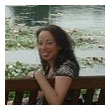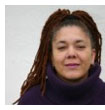|
Intermix.org.uk is a website for the benefit
of mixed-race families, individuals and anyone who feels they have a multiracial
identity and want to join us. Our mission is to offer a view of the mixed-race experience, highlighting icons, film, books, poetry, parenting techniques, celebrities, real lives and much more. Our online forums are a great place to meet others, ask questions, voice your opinions and keep in touch. Sign up for our monthly newsletter and delve into our pages. Want to join in? Become an Intermix member to take part: |
Mixedness & Mixing E-Conference
Day 2 Interaction: Panel Comments

Dr Chamion Caballero is a research fellow at London South Bank University and is currently working with Professor Rosalind Edwards on a project funded by the Joseph Rowntree Foundation looking at the experiences of parents from different racial, ethnic and faith backgrounds. She has a longstanding research interest in issues around mixed identities, particularly around the theorisation of mixedness, and was one of the authors of the DfES report 'Understanding the Educational Needs of Mixed Heritage Children', published in 2004.
From yesterday's broad scope of mixedness and equality, the conference now focuses on the personal, through today's topic of interaction.
In many of yesterday's papers, we heard how the demographics of mixedness in the UK are changing. Whilst we should be careful about reading these statistics as evidence of a new phenomenon (mixed couples, peoples and populations have a long, though largely overlooked, history in the UK), there is no doubt that there is a strong contemporary presence - and interest - in mixedness, as demonstrated by the very existence of this conference. However, as many papers yesterday also noted, what is lacking - in academic, policy and popular terms - is a subtle and nuanced understanding of the experiences of this group of people. The papers gathered under today's interaction theme give a flavour of this, and open up the way to another stimulating debate.
In different ways, all of the papers challenge the traditional stereotype of people who are mixing or who are of mixed race, ethnicity and faith as marginalised, confused and problematic, and many contributors speak eloquently about their personal experiences of facing and challenging stereotypes. Alongside the positives, however, there is also a strong recognition that mixedness and mixing are not always easy spaces to occupy, though contributors have different perspectives on why this is and what should be done about it.
Some contributors highlight the place of the family in developing strong and positive identities for children and, eventually, adults, whether this is in terms of racial identity, language development or cultural knowledge (Keith Ajegbo, Bina Radia-Bond). Similarly, other papers discuss the negative effect that ignorance and prejudice within the family - whether intentional or not - can have on the experiences of those who are in mixed relationships or who are mixed, arguing that it is not only white society that holds these positions (Ashley Chisholm, Tanya Datta).
Other papers focus more sharply on how factors beyond the family - such as class, gender, geographical location, etc. - shape and influence experiences of mixing and mixedness, and that popular attitudes and understandings of race and culture are as important here as the immediate family. Contributors discuss how lack of role models and sound historical knowledge and racial and ethnic stereotyping (Jessica Mai Sims, Rory Campbell, Toby Laurent Belson, Bob Macintosh) can be significant barriers to the acknowledgement and acceptance of mixing and mixedness as 'normal'. Some argue that whilst this normality is not always accepted by society, it tends to be how mixed families see themselves (Chamion Caballero), whilst others argue that mixed families are in a more challenging situation than other families (Bina Radia-Bond).
The need for more specific and sensitive research is again flagged up by many contributors as necessary to pull together and make sense of these diverse accounts, some which - such as those who are mixing faith, as well as race or ethnicity - we know very little about (Elisabeth Arweck). Certainly, more knowledge needs to be produced in this area. Why do some mixed families and people feel that their mixedness is problematic and others do not? Should the focus be on those within the family or those outside it? Will more mixing and mixed people aid social integration or is this naïve? What place can policy play in challenging and changing attitudes towards mixedness and mixing? These questions - which are raised time and time again throughout the papers - may be complex but, as Daniel McNeil asks in his paper, are there not certain consequences for all of us if we do not tackle them, but just let them lie?

Sharron Hall is from Moss Side, Manchester. Her mother is English and her father from Barbados. Sharron is the founder and editor of Intermix.org.uk, a website offering news and views of the mixed-race experience from all over the world, for which she received a Family Learning Millennium Award in 1999.
Interaction is a very necessary part of the mixed experience. From a young age mixed-race people have to learn to move between more than one social world, not only with outsiders but often with family as well. When this works well they can develop exceptional social skills that allow them to move from one social world to another and function productively. When it doesn't work, feelings of not belonging and low self-esteem can develop leaving the person feeling isolated from certain social groups and even family. Even when this happens individuals will develop their own coping strategies that others might find difficult to understand but which work well for the individual.
In big cities such as London, Liverpool, Manchester and Cardiff the large mixed population enable individuals to seek out others with similar backgrounds, whilst in more predominantly white populated areas, individuals have had to find other means such as the internet. With almost no portrayals of mixedness in education and the media other than the negative, the internet has become the easiest way to gain access to alternative views.
For those in the care system or in families where there is no access to fair portrayals and an understanding of their needs there is much work to be done. This has to come from a mixed perspective and those who work with mixed families and individuals need training as to how they can successfully interact with and satisfy service users.
The papers today look at areas where interaction is vital. Yesterday, Savita De Sousa & John Simmonds explained the difficulties of trying to place mixed-race children with adoptive or foster parents. Considering the overrepresentation of mixed-race children in the care system, new thinking is definitely needed. Maybe it's time for the adopted and fostered to be listened too. Today, Lin King brings up the subject of not being black enough, something which is currently being said of US presidential candidate Barak Obama. William Wells Brown, the mixed-race abolitionsist, once said: 'The nearer a slave approaches an Anglo Saxon in complexion, the more he is abused by both owner and fellow slaves. The owner flogs him to keep him in his place and the slaves hate him on account of his being whiter than themselves.' Does shadism play a part? We know it causes resentment in the Caribbean and Africa where those with a lighter complexion are often given the best jobs. Could it be present in the UK especially when media depictions of black are often represented by lighter skinned mixed-race people? Tanya Datta's paper about the racial mixing that occurs between other races such as African and Asian is particularly welcome as is that of Sir Keith Ajegbo who gives us a brief account of his life as a person of mixed-race and how he learned to balance his racial duality.

Dr Rob Berkley is Deputy Director of the Runnymede Trust, an independent policy-research organisation focusing on 'race' and social policy. His doctoral studies focused on exclusions from school and his continuing research interests lie in public policy, multiple identities, educational disadvantage, young people, 'race', ethnicity and social justice. Recent publications include ‘Identity, Ethnic Diversity and Community Cohesion’ (Sage: London 2007), ‘Britain; challenges for race equality’ (2006) and ‘Connecting British Hindus’ (2006).
This collection of papers focuses on interaction. Interaction is crucial to attaining the benefits of living in a multicultural society. Diversity of experience within a society is inevitable and there will be a range of different cultural practices that communities and ethnic groups will adopt. This diversity can only lead to greater creativity and a successful society where all talents are valued if there is meaningful interaction between people. Diversity without interaction is segregation.
A recent research study carried out for the CRE (1) suggested that there are barriers to interaction across ethnic groups and listed them as follows:
* physical segregation,
* lack of opportunities and arenas,
* differences of language,
* mistrust,
* anxiety about saying something 'culturally inappropriate'
* family and friends already took up most of their social time
The authors of these papers highlight the ways in which people racialised as mixed and/or in mixed families can be at the vanguard of this interaction because they are well placed to overcome these barriers. Ajegbo points to the emotional intelligence and cultural sensitivity he has attained because of his experience of being mixed. Campbell considers what people racialised as mixed bring to 'race relations' through being 'more likely to see the perspective of both their ethnicities'. Macintosh highlights how being in a mixed family has helped him understand his whiteness, an ethnicity too rarely examined.
A number of authors then go on to consider mixed families. Chisholm and Datta highlight the barriers to relationship formation across racial categories; barriers imposed not just by white communities. The 'policing' of communities in such a way as to delineate insiders and outsiders is not the preserve of those we have traditionally viewed as being the privileged majority. Where racism equates to prejudice plus power, we have to recognize the power that is held within communities and families that are often characterized as disempowered. Datta provides a clear reminder that while our emphasis in anti-racist work has been about improving relations between white and BME communities - there is much work to be done in considering relationships between members of different minority communities.
Arweck, in looking at mixed faith families, reminds us that mixing may occur along other 'identity indices' than that of ethnicity. Many of the challenges are the same, in particular where religious identities are strong and changing over generations. Caballero provides an important counterweight to Radia-Bond's more pessimistic view that 'intermarriage is sheer hard work' through her analysis of the experiences of mixed families, and makes some significant recommendations for policymakers, including a challenge to the tendency to generalize inappropriately about mixed families.
(1) SHM (2007) Promoting interaction between people of different ethnic backgrounds CRE: London
